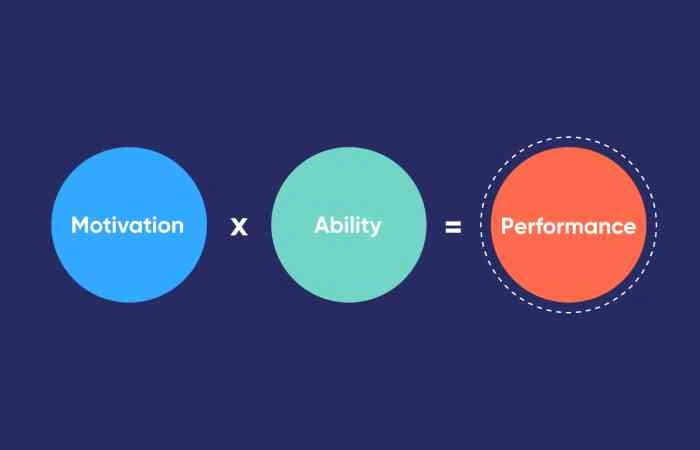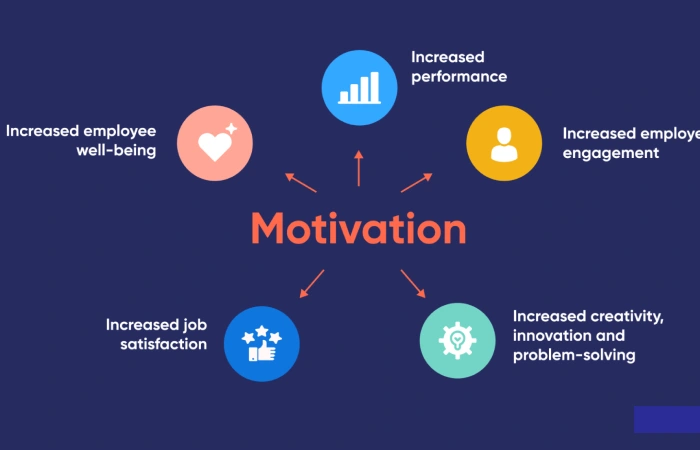We have all been in that area. You’re busy with work, and a limit is approaching. You feel sharp, productive, and strengthened. Your work motivation is in height.
You like the work and feel great about how much development you’re making.
We call this mental state flow: where an individual is wholly engrossed in their enjoyment of inactivity.
“Motivation” seems almost irrelevant — your interaction with the work itself motivates you.
Unfortunately, we’ve all had the opposite experience when doing something we don’t enjoy.
Time passes, and you are acutely aware of it. Yet, you’re no closer to completing the task. Perhaps you’re having difficulty getting started or are dreading the next step.
What distinguishes these two descriptions? It depends on how motivated we are. We give our best exertion and go the extra mile when we are motivated.
You’ve probably noticed how employee satisfaction affects human motivation if you’re a manager. You’ve undoubtedly seen a decrease in employee productivity when this occurs.
Let’s define work motivation, why it matters, and how you can instill it in your employees.
Table of Contents
Work Motivation as a Concept

The concept of motivation occupies a central place in the field of psychology. Motivation is about making decisions about where we spend our energy and how we prioritize.
These options are essential in the workplace.
We strive to do our best when we are highly motivated at work. We are sometimes motivated by external factors such as how much we are paid, the benefits we receive from our jobs, or whether we receive recognition from our bosses or positive feedback.
Internal factors, such as how much we enjoy what we do or how important we believe the work is to the company, can also motivate us.
Our performance is directly affected by our level of motivation at work. According to organizational psychologists, an employee’s performance is influenced by: • their ability to do the work • their motivation to succeed
This relationship remains frequently expressed as the following equation:
PERFORMANCE = MOTIVATION X ABILITY
In other words, simply knowing how to do your job isn’t enough. It would help if you remained driven to put your skills to use.
It is imperative when the tasks are complex, or the work required is ambiguous due to changing needs and conditions.
Motivation propels us through challenges and helps us overcome doubt and uncertainty about new tasks.
What is the significance of motivation?
Given the advantages of having a highly motivated workforce, it is in a company’s best interests to maximize employee engagement and motivation.
Improving workplace motivation has several advantages, including the following top five outcomes:
1. Improved performance
Motivated employee will give their all and perform at a higher level.
We can tell the difference between a person’s peak and average performance.
When people are motivated, there isn’t much of a difference between the two. That is, they consistently perform to the best of their abilities. Conversely, employees rarely perform to their full potential when motivation is low.
2. Boosted Employee Engagement
Employees with higher levels of motivation are generally more engaged with their work.
It means that businesses will notice:
- Lower turnover and absenteeism
- Healthier coworker relationships
- enhanced customer service
3. Increased Creativity, Innovation, and Problem-Solving Capabilities
Motivated employees are more creative and innovative and solve problems more effectively.
They put more energy into these activities because they work with more extraordinary passion and feel connected to their work.
When faced with a challenge, motivated employees adopt new behaviors and are creative and flexible in their search for solutions. As a result, they can get past minor inconveniences.
4. Enhanced Job Satisfaction
More motivated employees also report advanced levels of job satisfaction. More satisfied employees are more efficient, productive, and care more about their work.
5. Improved Employee Happiness
Motivated employees report higher levels of well-being and mental fitness. Their physical and mental health improves when they are energized and excited to do their work.
This relationship becomes cyclical.
Increased motivation leads to a greater sense of well-being. At the same time, increased employee well-being leads to increased motivation.
The Spiral of Poor Work Motivation

Managers must be motivated at work, and encouraging others is an essential leadership skill. Finally, consider the consequences of a disengaged workforce. There are additional costs to losing the benefits listed above.
Performance decline
It has an immediate negative impact, resulting in higher costs, lower quality work, and missed revenue opportunities. However, it is also detrimental in the long run.
Because unmotivated employees are unprepared to respond to changing conditions, businesses suffer.
They will have a less adaptable and future-ready workforce that cannot take advantage of future opportunities.
Employee disengagement
Employee disengagement results in • increased turnover • absenteeism • decreased customer satisfaction • potentially increased employee conflicts and incidents
Reduced creativity and innovation
Fewer attractive opportunities or challenges will emerge due to reduced creativity and ideas. As a result, it limits the organization’s innovative and creative potential.
Job dissatisfaction
It harms recruiting and retention and can lead to safety and quality issues.
Inadequate motivation
Motivation can be contagious, but so can a lack of it. If unaddressed, a few unmotivated team members can demotivate those around them.
Others may begin to doubt themselves for working so hard or the team’s ability to deliver impact with such low commitment.
Conclusion:
Finished research with thousands of employees and leaders, we’ve exposed that five primary motivations drive people’s actions. Being motivated to do your work can help you achieve greater output. It is because explanation provides you with a clear focus and deters distraction.
Also read: How to say Thank you for your Compliments
Related posts
Featured Posts
Marketing Internship – What Does It Do?
Marketing Internship: Marketing interns are typically marketing students or fresh graduates interested in getting work experience before taking on a full-time…
Mouse Drop – Introduction, Editing, And More.
Introduction Mouse Drop: Drag-and-drop refers to selecting an item or helping of text, moving it (dragging), and then dropping it…


